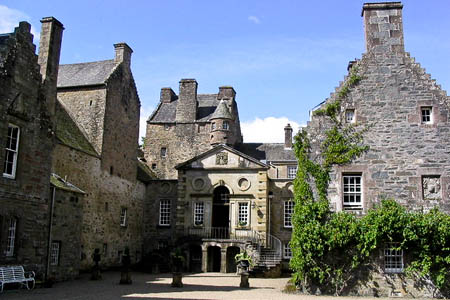A Scottish laird was fined £9,000 for carrying out unauthorised engineering work in Scotland’s longest river on his Highland estate.
The contractor who carried out the work on the River Tay on behalf of the landowner was also fined.
Thomas Steuart Fothringham, the 14th Stewart Laird of Murthly, pleaded guilty last August to allowing the work to be carried out on his estate at Murthly Castle near Dunkeld in Perth and Kinross.
The 140m-long excavation and riverbank reinforcement caused damage to the river environment and put at risk internationally important species including freshwater pearl mussels.
Sheriff Michael Fletcher, sitting yesterday at Perth Sheriff Court, imposed the fine. John McIntosh, of McIntosh & Robertson, who carried out the excavation and works, was ordered to pay a fine of £900. Fothringham also faces costs to restore the site.
The Scottish Environment Protection Agency, which brought the prosecution, said it hoped the penalties would act as a reminder to anyone organising or carrying out engineering works in rivers that any resulting damage to the environment will be taken seriously.
SEPA received a complaint on 5 June 2010 from a member of the public about engineering works that had been taking place in the River Tay, 2km (1¼ miles) from Birnam Wood, which features in Shakespeare’s Macbeth.
Following investigations by a SEPA official, the laird admitted he had not consulted either the authority or Scottish Natural Heritage. He also said he had extracted gravel from an island in the river.
Scientific tests by an expert found that the unauthorised works had a locally significant impact to the river morphology and flora and fauna which depend on it, had caused direct physical damage, destruction and removal of habitat and had an indirect impact including changes to river processes which may affect habitats upstream or downstream due to increased rates of erosion, deposition or sediment transport.
Ian Thomas, SEPA’s investigating officer, said: “I have never witnessed unauthorised gravel extraction or grey bank protection over such a large area before, let alone on the same site.
“The River Tay is also home to freshwater pearl mussels, which is a highly protected and extremely rare species.
“It is one of the longest living invertebrates, capable of living for well over 100 years. Its range has shrunk considerably due to pressures, including pearl fishing, pollution and river engineering, and it is now estimated that Scotland holds approximately half the known remaining breeding populations in the world.
“Therefore Scotland has a critical role in supporting the continued global survival of this important species.
“If the required controlled activities regulations licence been applied for, SEPA in consultation with SNH, would have required a survey for freshwater pearl mussels to be completed.
“Any licence issued would have contained conditions to ensure that the mussels and other river life were not harmed. By failing to apply for the required licence Mr Fothringham and Mr McIntosh did not allow SEPA to place necessary conditions to protect the environment and natural heritage interests.”
Gavin Clark, operations manager for Scottish Natural Heritage added: “We are disappointed that prosecutions continue to need to be taken to enforce Scotland’s laws protecting important natural environments in Perthshire, the River Tay being prime among them.
“Hopefully this case will send a clear signal that taking machinery into the river channel and extracting dynamic, active and mobile gravels, on which the health of the river and its salmon depend, should not be done without serious consideration, expert advice and ultimately the necessary authority.”
Fothringham said he carried out the work on the eroded bank for health and safety reasons.
Murthly advertises itself as ‘the estate where the Highlands begin’. It also boasts it has some of the best fly-fishing water on the River Tay. The estate also offers partridge and pheasant shooting and deerstalking.
